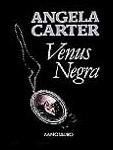

最新书源
-
Wolf-Alice-2 来自 点点小说
更新 2019-11-21 20:45:53 -
Wolf-Alice-2 来自 紫云宫小说网
更新 2019-11-21 14:42:39
内容简介
Published in 1979, The Bloody Chamber and Other Stories, which received the Cheltenham Festival Literary Prize, retells classic fairy tales. Angela Carter revises Puss-in-Boots and Sleeping Beauty, for example, from an adult, twentieth-century perspective. Her renditions are intended to disturb and titillate her audience, instead of lulling it to sleep. The title story recasts the legend of Bluebeard, the mysterious French nobleman who murders his many wives. The legend, as recorded by the seventeenth-century author Charles Perrault, begins with the marriage of a girl to an eccentric, wealthy man. Called away on business, the newlywed husband leaves his wife the keys to every room and cabinet in the house. This keyring includes one key that she must not use: the one to the room at the end of the great gallery. Of course, she eventually enters the room forbidden to her. In it she finds the corpses of her husband's previous wives, all with their throats cut. Startled, the girl drops the key, which is enchanted and permanently stained by the blood on the floor. From this stain, Bluebeard discovers her disobedience. He raises his scimitar, but just in time, her brothers arrive to slay the murderer.Though it follows the original tale in basic structure, The Bloody Chamber adds details of character and setting that raise issues of sexual awakening and sexual depravity, of the will to live, and of life in hell. In having the young bride be the one to tell her story and in having her courageous mother come to the rescue, moreover, Carter revisits an age-old tale with her feminist viewpoint.
展开全部标签: 英文


